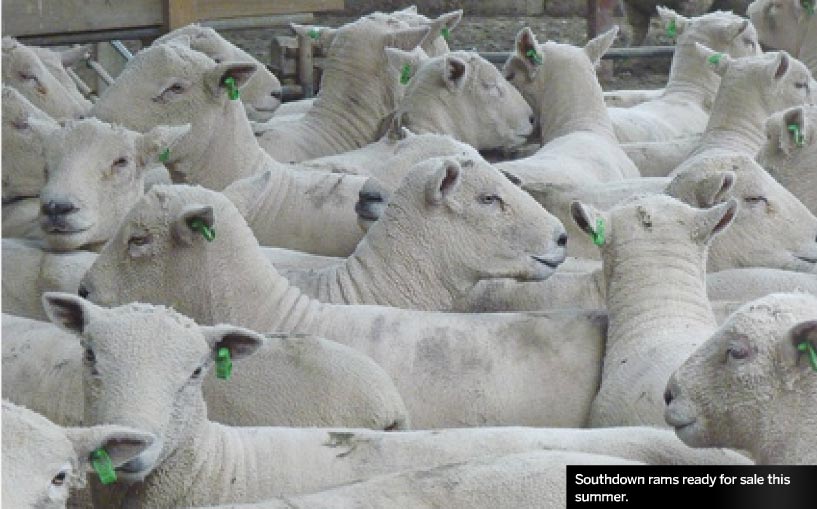Published Rural News 23 October 2012
TALK TO commercial lamb producers using Southdown rams and you’ll find common threads running through all their comments, even if they are from opposite ends of the country.
Take Wayne Bloxham, at Whitiwhiti Station, north of Gisborne: by the time you read this, he will probably have sent his first draft of lambs to the works. “We aim for mid to late October, off their mums at 16kg carcase weight, sometimes a bit heavier.”
Southdown terminal sires are a key part of that early finishing strategy.
“We find they’re quite early maturing and quick to fatten. Normally we get a good pick off their mums and another big one when we wean them.”
At least half will be gone by the December draft and by the time it gets dry, as it can on the 1350ha medium steep coastal property, “there are bugger-all left.”
He lambs in July, the Southdowns running with 1200 of a 3000-head Coopworth flock.
“Their survival rate’s normally pretty good, though this lambing wasn’t exceptional because they dropped into puddles, it was so wet.”
He’s been using Southdowns for about nine years, and while he’s careful not to let lambs get too big, “they’re not like the old Southdown where the lambs went straight to fat,” he notes. “Now we try not to let them go over 23kg, though we have slipped up in the past and it’s not uncommon for some to hang up at 24-25kg.”
This year he’s lambed hoggets for the first time, using Southdowns as the sire with 80% of 600 mated getting in lamb. “There have been no lambing issues with them. They’ve been spitting them out like a piece of cake,” he said midway through the hoggets’ drop.
Down in Southland, Bill and Beth Gordon, Garston, are also keen to get lambs away early, albeit from much later lambing. “It can get quite dry here in the summer and if it gets dry, having quick maturing lambs means there’s more space for the Romneys,” notes Bill.
That means better grown replacements and better condition in the 2200-ewe Romney flock, feeding through to the following year’s lambing result. Even if it doesn’t get dry, having the crossbred lambs away sooner means more feed to do something else with, such as fatten cattle, he adds.
“We wean [lambs] the week before Christmas and take a draft then, up to 300 or 350 depending on the season.”
That’s from lambing starting the third week of September. He’s also using the Southdown across his hoggets.
“They seem to lamb reasonably easily.”
And while they don’t have the same coat as the purebred Romney lambs, there’s no problem with their vigour and survival as lambs, he adds.
Unlike Bloxham, Gordon’s stuck with the Southdown as his terminal sire of choice through thick and thin – “since the mid 1970s” – but makes similar comments to Bloxham about how they’ve changed over the years.
“They’ve got more stretch in them now whereas they used to be a bit short and dumpy and went to fat. They’re leaner now.”
And in recent years the Gordon’s have had the competition results to prove it: three times they’ve had lambs in the finals of the Golden Lamb Awards at Wanaka A&P Show.
“It’s just for interest really. Competitions are more interesting if you take part, rather than watching from the sidelines.”

